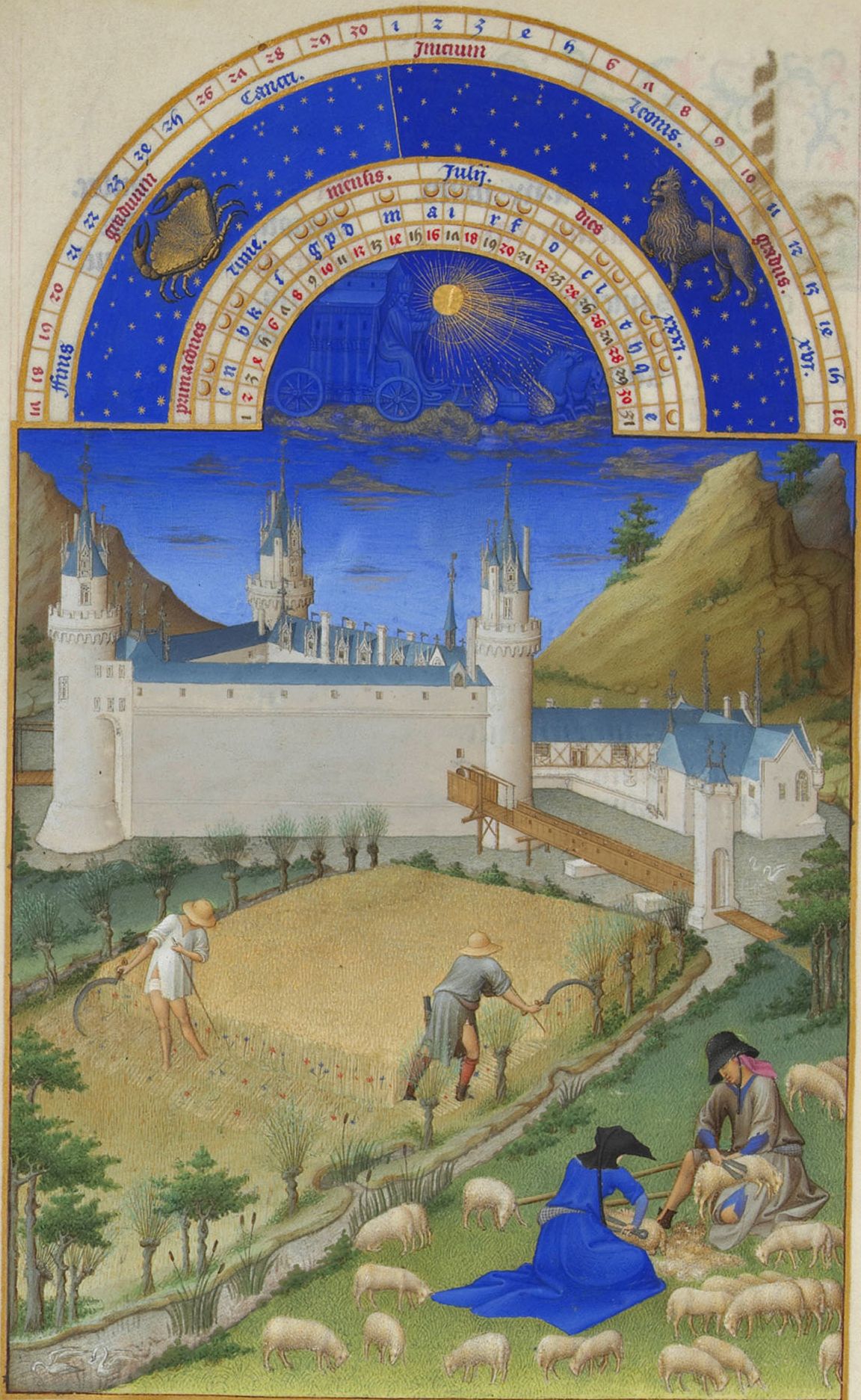Circumstances
Until well into the 20th century, most people in Western Europe (and elsewhere) lived a marginal existence. Their lives were regulated by the seasons. This was beautifully depicted in the late-medieval calendar miniatures in the “Très Riches Heures du Duc de Berry”, painted around 1414 by the brothers van Limburg and (later) Barthélemy van Eyck and Jean Colombe. There was only a single grain harvest per year, and people had to make do with that (see the calendar miniature for July, link 1). If you held swine, in autumn you could send them into the forest to fatten themselves on acorns (miniature for November, link 2).
But if these were exhausted you had no fodder for them until next spring, and you did best to butcher most of them and eat them yourself. If you dried, smoked, pickled the meat, or boiled it as a sausage with a lot of garlic (helps protect against rot), you could keep it for a while. About half way into the winter people had a final feast, in which they ate the last remnants of meat: Carnival (Latin carne = meat).
After that, the Lent period of fasting began, until Easter. It became a religious custom in which Christian values like austerity, abstinence – from feasting, fine foods, and sex – , restraint, endurance and perseverance were promoted: but I think its main purpose was to keep up morale in a time of year when fasting was a bitter necessity. Every winter people died of cold and famine (also see the miniature for February, link 3). So people really looked forward to the end of Lent. Easter is a Christianized spring festival. March hares (no Easter bunnies!) started to multiply, birds laid eggs that you could search for, and then people had something to eat again.
Now as we all know, Easter is celebrated on the first Sunday after the first Full Moon of spring. Officially hower, Easter Sunday occurs not after Full Moon, but after the 14th day of the lunar month, which is reckoned to begin when a crescent New Moon becomes first visible after sunset, not with the conjunction of Sun and Moon 1 or 2 days earlier.
Anyhow people really looked out for that Spring Moon. Therefore it was hard to swallow if 4 Full Moons fall within the winter season: you think that the fourth is the Easter Moon announcing springtime, but then it becomes apparent that you will have to fast for another full month!
Moreover, this rule of thumb was not valid according to the church. The church does not do astronomical observations, but uses a reckoning (called the Computus) to establish the holidays. This was based on the Julian calendar for the solar year, and the cycle of Meton that distributes 235 lunations over 19 years. The table they used had been introduced in the early Middle Ages, in 525 A.D. by Dionysius Exiguus (links 6),7),8)). Meton's cycle is imperfect however, and accumulates a systematic error of about 1 day in 3 centuries. Moreover the average Julian calendar year is somewhat longer than the so-called tropical year which follows the seasons: every 131 years the beginning of spring (Sun in the spring aequinox, the first point of the zoodiacal sign of Aries), falls 1 day earlier in the Julian calendar.
By the 16th century, the ecclesiastic Moon was already about 3 days behind the real Moon that everyone could see in the sky. Moreover the spring aequinox fell already on 10 or 11 March in the Julian calendar, but the church kept the start of spring fixed on 21 March which used to be the date in late Roman times when they established the rules. So people could see, smell, and feel that spring was beginning, and see that the Moon was full: but the church told them that it was a "betrayer" Moon, and that they had to wait for another month before the fasting of the Lent period was over and they could celebrate Easter. Lent starts 40 days before Easter as the church reckons it: but the winter season of course had started already in early December, especially at that time when the Little Ice Age was going on, so the winter season would have been made unnecessarily long in the experience of people.

